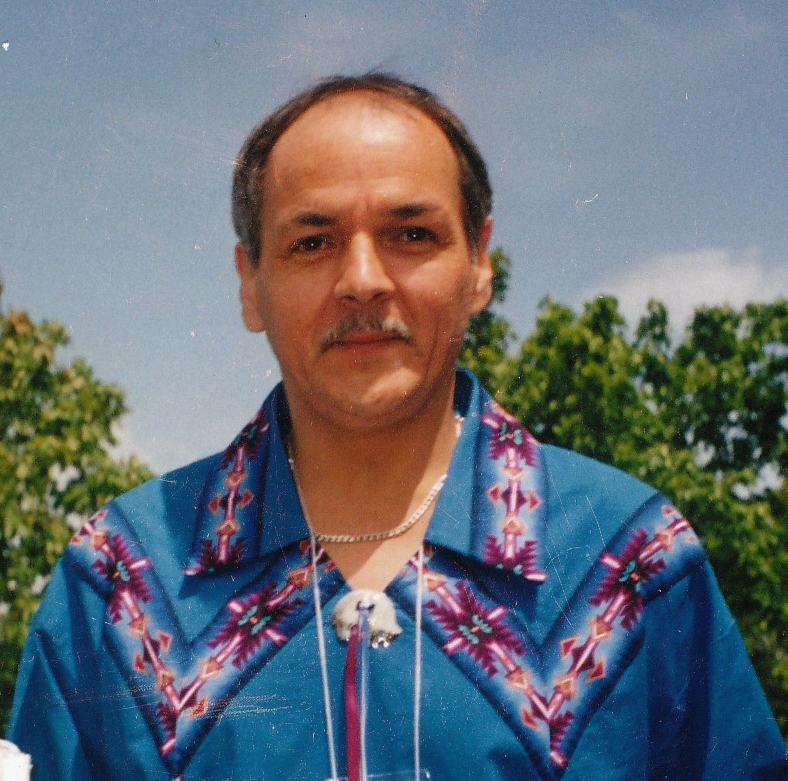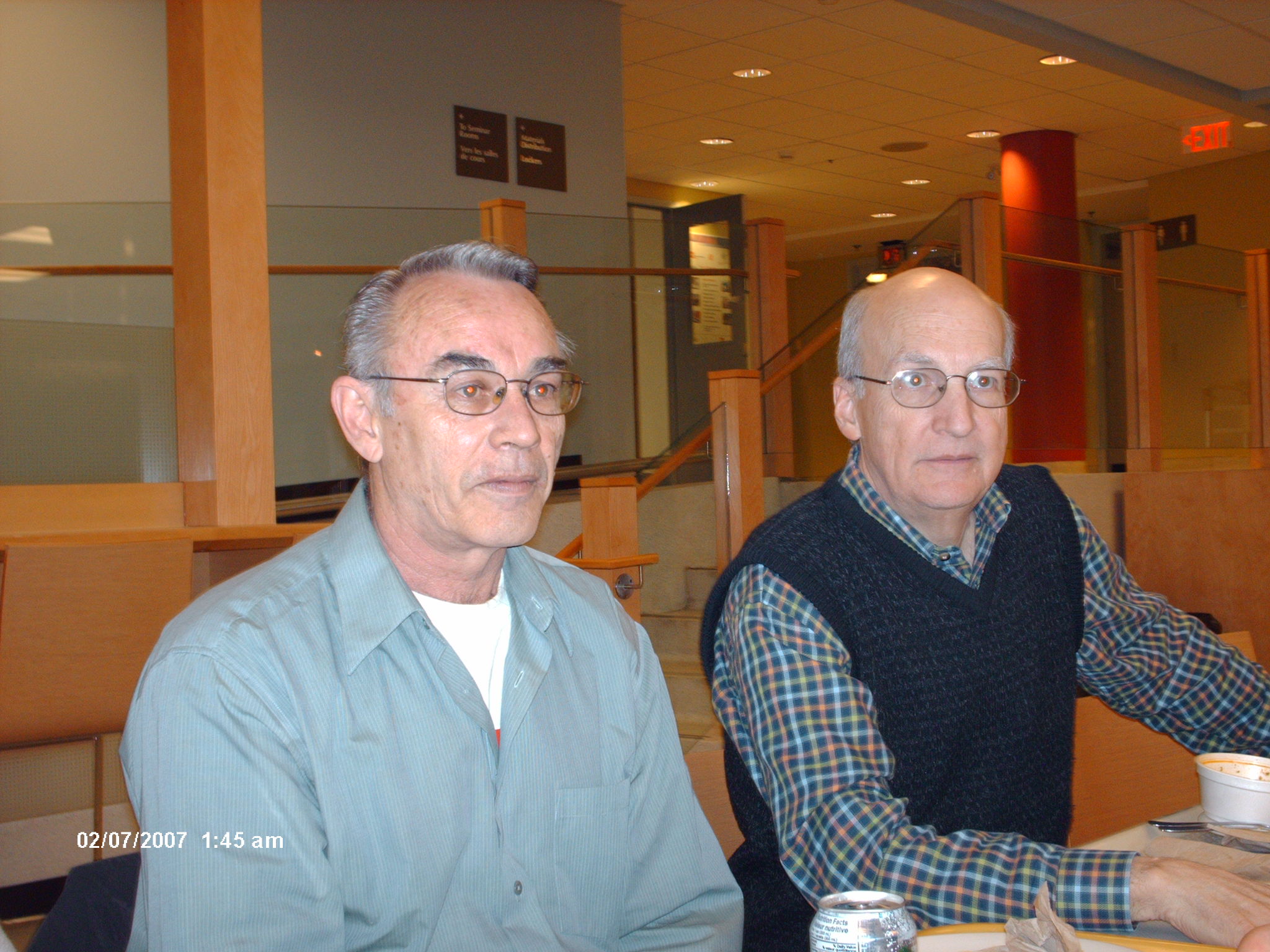Canadians like to think our justice system is one of the best in the world. But ask the dozens of people prosecuted and imprisoned for serious crimes they didn't commit, and you're likely to get a different view, especially from those accused of murder. In recent decades, more than 20 Canadians have been locked up — much of their lives destroyed — for murders they had nothing to do with. Their wrongful convictions are a stain on our history, while their subsequent exonerations give cause for hope. Here are six of their stories. (See also Wrongful Convictions in Canada.)
Donald Marshall Jr.

Donald Marshall Jr., a Nova Scotia Mi'kmaq, was among the first in Canada to have his wrongful murder conviction overturned.
In 1971 at the age of 17, Marshall and a teenage acquaintance named Sandy Seale were confronted in a park in Sydney, NS by Roy Ebsary, a local ruffian. Seale was stabbed to death and died in hospital.
Marshall offered to help police. Instead, he was charged and convicted of the crime himself. He spent the next 11 years in prison – escaping briefly in 1979 – always insisting on his innocence. Finally in 1983, following an RCMP re-investigation based on new evidence, Marshall was paroled and acquitted, but offered no compensation for his suffering. The courts said he was partly to blame for his own misfortune.
It took another seven years before a royal commission into the case, ordered by then federal Justice Minister Jean Chretien, fully exonerated Marshall of any blame. Ebsary was convicted of manslaughter in Seale's death, and Marshall was compensated with $1.5-million.
The commission said police incompetence, and racism in Nova Scotia's justice system, were the causes of the travesty. The Marshall case was an eye-opener for Canadians about societal attitudes towards Indigenous people. It was also a judicial trailblazer that paved the way for others wrongly accused of murder.
Marshall died in 2009, aged 55.
“The criminal justice system failed Donald Marshall, Jr. at virtually every turn from his arrest and wrongful conviction for murder in 1971 up to, and even beyond, his acquittal by the Court of Appeal in 1983.” – The Marshall Inquiry report, 1989
Thomas Sophonow

Thomas Sophonow, alone among the wrongly convicted in Canada, was tried three times for the same crime before finally being exonerated.
A 29-year-old machine-operator from Vancouver, Sophonow was in St. Boniface, Manitoba on 23 December 1981 hoping to visit his young daughter, who lived with his ex-wife. That same night, a teenage counter server named Barbara Stoppel was strangled in a St. Boniface donut shop. Sophonow was picked up and identified in a police line-up by witnesses who had seen a similar-looking man in the donut shop before the murder.
After an aggressive strip-search and interrogation that would be illegal today, Sophonow was persuaded that he had killed Stoppel and then blacked out, remembering little of the crime. He confessed to police – but later claimed innocence, insisting he was getting his car brakes fixed at a local Canadian Tire at the time of the murder.
At Sophonow's first trial in 1982, the jury couldn't reach a unanimous verdict. At his second the following year, he was convicted of second-degree murder, but the verdict was overturned on appeal. He was convicted again at a third trial in 1985, and again the Manitoba Court of Appeal reversed the result, this time ruling that Sophonow couldn't be tried a fourth time.
After four years behind bars, and even longer under the shadow of a murder prosecution, Sophonow received an apology from the Manitoba government. A provincial inquiry condemned the Winnipeg police for what it called their "startlingly unfair" procedures, and tunnel vision in constructing a case around a man investigators had decided was the murderer. It awarded Sophonow $2.6-million in compensation.
Barbara Stoppel's murder has never been solved. Meanwhile, Sophonow – who lives in British Columbia with his second wife and three children – remains deeply scarred by his very public ordeal. His house was once firebombed, and his daughter once asked, after seeing his face on the TV news: "Daddy, are you a murderer?"
David Milgaard

In 1969, David Milgaard was a 16-year-old hippie in Regina, when he was arrested for the rape and murder of Gail Miller, a Saskatoon nurse. He would spend the next 23 years in prison – being beaten and sexually assaulted by other inmates, and several times attempting suicide – before authorities finally admitted they had the wrong man.
Larry Fisher, a known sex offender, was the actual killer. At the time, Fisher lived in a Saskatoon basement apartment rented from Albert Cadrain – who happened to be a friend of Milgaard's. The morning of Gail Miller's murder, Milgaard and two other friends drove from Regina to Saskatoon, to pick up Cadrain for a road trip to Calgary. Months later, after returning home, Cadrain called police to say his friend David had been acting strange the morning of their departure, and might be responsible for Miller's death.
At first Milgaard's other young friends provided an alibi, saying he was with them in Regina at the time of the murder. In later interrogations the youths – high on drugs and under pressure from police – said Milgaard had killed Miller.
Milgaard went to prison insisting on his innocence. For decades his mother Joyce fought a crusade for his release. In 1992 the Supreme Court of Canada finally reviewed the case. By this time Fisher, serving time for other sexual assaults, was a suspect in the Miller murder. One of the youths who had implicated Milgaard had also recanted. Milgaard was freed. His case generated headlines across Canada.
Milgaard sued authorities in Saskatchewan, and by 1999 – with DNA evidence linking Fisher to the crime – Milgaard was officially cleared of wrongdoing. In 2008, an inquiry found serious flaws in the way police had elicited false statements from witnesses, and with the Crown's unwillingness to disclose key evidence to the defence.
Milgaard received $10-million from the Saskatchewan government. Today he lives with his wife and children in Calgary.
Guy Paul Morin

When nine-year-old Christine Jessop was sexually assaulted and murdered in Queensville, Ontario in 1984, police – struggling to identify the killer – turned their attention to her eccentric neighbour Guy Paul Morin.
Morin, 24, was a reclusive furniture maker who loved beekeeping and playing his clarinet. Arrested in 1985, he was portrayed by prosecutors as a misfit with a sexual obsession for the young girl next door. Morin was acquitted at his first trial, but the Supreme Court of Canada ordered a re-trial. He was eventually found guilty in 1992, despite claims by Morin's lawyer that more viable suspects had been overlooked by police.
By 1993, new advances in DNA technology produced test results that showed the semen found on Jessop's underwear did not belong to Morin – ruling him out as her killer. He was released from prison, and in 1995 received an apology from the Crown, and his conviction was overturned.
A public inquiry found the case to be a compendium of official error, with police tunnel vision, scientific bungling and the suppression of evidence. Morin was awarded $1.25 million in compensation for the 10 years, including 18 months in prison, during which he endured the stigma of a terrible crime.
Christine Jessop's murder has never been solved.
“No one will ever look at me again and say: ‘He might have done it’. I had the dagger hanging over my head, all right. But this is like a motion picture ending.” – Guy Paul Morin, speaking at the end of the inquiry into his wrongful conviction.
Steven Truscott
Steven Truscott was only 14 when he was arrested in 1959 for the rape and murder of Lynne Harper, a 12-year-old schoolmate. Tried in adult court despite his young age, he was convicted, sentenced to death, and imprisoned – not knowing when he might be executed.
Witnesses had seen Truscott cycling with Harper on the handlebars of his bicycle, two days before her body was found on the outskirts of the small town of Clinton, Ontario. He said he had given her a lift to a highway intersection, where Harper wanted to hitch a ride to her grandmother's house, and that he had seen her get into a Chevrolet with an out-of-province plate.
Truscott appealed his conviction, but it was upheld in 1966 by the Supreme Court of Canada. On the eve of the appeal hearing, the pathologist whose evidence about Harper's time-of-death had been key to the conviction, had written to authorities saying there were errors in his conclusions. Although this potentially exonerated Truscott, the letter was never disclosed.
Truscott's death penalty had been commuted to life imprisonment by the federal government. He served 10 years and was paroled in 1969 before disappearing into anonymity, living in Guelph, ON, under the assumed name Steven Bowers.
Years later, Truscott and the Association in Defence of the Wrongly Convicted (AIDWYC) began lobbying for a review of his case – based on the faulty evidence at his trial, and other prosecution failings. In 2006, he was acquitted by the Ontario Court of Appeal, and awarded $6.5-million in compensation. Lynne Harper's murder has never been solved.
Truscott remembered that when he was first locked up, he had been drugged with LSD and truth serum by authorities, in the hopes that he would confess.
“I’m not bitter,” he said. “You can’t live day after day being bitter... I’ve moved on with my life. My wife and I raised a family. I was always taught to look at things positively."
Romeo Phillion

Romeo Phillion spent 31 years in prison – longer than any other Canadian wrongly convicted of murder.
After a hard childhood of abuse and abandonment, Phillion grew into a drifter, committing petty crimes to survive. In 1967, he was questioned by police about the murder of Ottawa firefighter Leopold Roy. But Phillion had an alibi – he wasn't in Ottawa at the time of the murder.
Five years later, while he and his boyfriend were being questioned by the cops for an unrelated investigation, Phillion suddenly confessed to the 1967 murder. He would later call it a crazy mistake – part of a plan in which his boyfriend would corroborate the confession, in the hopes of obtaining reward money for the unsolved Roy murder.
By the time of Phillion's trial he had recanted his confession, but it was too late. He was convicted and handed a lifetime sentence. Behind bars, he attempted suicide several times, and once even escaped, robbing a bank in Kingston, Ontario and returning to prison with the money.
Phillion steadfastly refused to apply for parole, because to obtain release he knew he would have to admit to the murder. In 1998, a parole officer left a document in his cell – a buried, 1968 police report that ruled out Phillion as a suspect in the murder, because his alibi at the time had checked out.
Armed with this and other undisclosed evidence, the Association in Defence of the Wrongly Convicted lobbied the government for a review of Phillion's case. He was granted bail in 2003, and three years later the Ontario Court of Appeal ordered a new trial. Instead, the Crown simply withdrew the murder charge, leaving Phillion in legal limbo -- not officially proven to have been wrongly convicted, and therefore deprived of the right to financial redress.
Phillion fought a long battle for compensation. In 2015 the Supreme Court of Canada upheld his right to pursue a lawsuit against the government. Months later he died, aged 76.
“They want you to sit there and feel remorse for something you didn’t do. I’m going to fight on. I’ll take any test they throw at me because I’m innocent.” --Romeo Phillion, speaking from prison, 2001
Lessons

Before the 1983 reversal of Donald Marshall's murder conviction, little credence had been given to the notion that serious miscarriages of justice take place at all in Canada, let alone that dozens of innocent people might be languishing behind bars. Over the ensuing 30 years, that belief was demolished.
Canada is now a pioneer in detecting and correcting cases of wrongful conviction. Advances in forensic science have reduced the use of unreliable evidence such as hair samples. Eyewitness testimony has also been exposed as a grave potential danger.
However, problems persist in other areas.
Tunnel vision by police investigators, who become fixated on whom they believe is the most likely suspect, remains an obstacle in getting at the truth. Another problem is concocted testimony from prison inmates, who claim to have heard a fellow inmate confess to a crime.
Other causes of wrongful convictions include: inept or inadequate representation by defence counsel; failure by authorities to disclose evidence prior to trial that could contribute to an acquittal; contaminated evidence; false confessions by defendants due to pressure or trickery by police interrogators; and destruction of evidence once the court process is finished, complicating any exoneration efforts in subsequent years.
Another cause involves lenient plea bargains offered by the Crown. These may prove so attractive to an innocent defendant who faces a lengthy prison term that he or she feels compelled to plead guilty.

 Share on Facebook
Share on Facebook Share on X
Share on X Share by Email
Share by Email Share on Google Classroom
Share on Google Classroom












